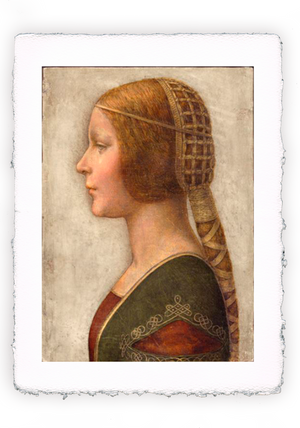
The golden painter. Jan Vermeer
Holland around 1600, and for almost a century, experienced a flourishing and peaceful period that historians have called "The Golden Age".
Peace and wealth together with a tolerant character of the population were the alchemy of a social structure in which commerce, culture and the arts flourished.
It is in this environment that Jan Vermeer was born in 1632, one of the best known and most appreciated painters in history today.
Vermeer was born in Delft, Holland, between Rotterdam and The Hague. In Holland there is no "Vasari", who documents and recounts the lives of painters, and information on Vermeer's life has been collected through documents, registers and comments from fellow painters.
His father Reynier was a silk weaver, but he was also involved in trading works of art. In 1641, Vermeer's parents bought an inn near the market square.
Young Jan studies painting by Carel Fabritius, one of Rembrandt's most gifted and promising pupils, who died at the age of 32 in Delft in a huge explosion in a warehouse near his studio that destroyed an entire neighborhood.
Jan Vermeer was 20 years old when his father died in 1652 and he inherited an inn and various businesses and the following year he joined the "Guild of San Luca", which is the painters' guild.
However, the guild records show that Vermeer was unable to pay the admission fee, which would indicate that the painter, despite all his activities, was having financial problems.
In that particular historical period in Delft the painter was not a character like Veronese or Tiepolo or even Caravaggio who had to do with kings and powerful men could be. Art was, if we can say so, popular and every family, who was not poor, bought paintings and the Dutch houses were well stocked with paintings. So the fact that a painter owned an inn and traded in textiles was perfectly normal.
There were specialized painters who produced paintings listening to people's tastes (today we would say consumers). Still lifes, genre scenes, views, interiors and “tronie”. The tronie were the faces of characteristic people who were not portrayed, that is, they did not represent a particular individual, but made up faces.
To this category, for example, belongs one of Vermeer's most famous paintings: The Girl with the Turban (also known as Girl with a Pearl Earring).
There were shops where you could buy paintings as well as clothes, furniture or anything else. Art within everyone's reach, among the people.
Jan Vermeer had two peculiarities that did not make his job easier.
The first is that it was very slow. It took so long to paint a picture that the final price, which in any case was determined by the market, hardly paid off. Furthermore, the blue he used to paint was pure lapis lazuli which at the time was difficult to find and cost more than gold.
Vermeer was a Protestant, but in 1653 he met Catherina Bolnes, who was different not only in religion but also in social class because of a very rich family.
Jan converts to the Catholic religion and moves to his wife's house, where his mother-in-law, Maria Thins, makes her income available for her son-in-law to establish himself in the world of art.
Things seem to be improving: Pieter Van Ruijven, one of the richest citizens of Delft, becomes his patron and usually buys his paintings.
In 1662 he was elected head of the Guild, which indicates that he was considered a respectable citizen. Meanwhile, with his wife Catherina he also gives birth to 14 children, who do not facilitate the family budget.
The themes dear to Vermeer are scenes from everyday life. A bourgeoisie attentive to the values of work, of the family, dedicated to the care of children and serenely engaged in the matters of domestic life.
In his images the objects are refined and luxurious and the actions are simple and everyday ones, such as reading a letter, drinking a glass of wine, pouring milk, embroidering.
Here is that in 1672 Mr. Louis XIV, having interrupted the war with Spain, wants to take the Netherlands; not alone, England also allies itself with France.
The rich port and the prosperous Dutch situation is tempting.
The Dutch will call this year "the year of disaster". Rampjaar.
For the invaders, things were not that easy and the Dutch gave a hard time. They opened the dams and flooded the territories stopping the armies and the rest is history.
It was certainly a disaster for Vermeer, who began to run into debt as people had everything in mind but to buy a painting.
There is a document, drawn up on the declaration of his wife, that Jan Vermeer could not withstand the vertical collapse of his activities and the oppression of debts was the cause of his death at the age of only 43.
The wife offered her husband's house and paintings to the City Council and somehow closed the matter, keeping nineteen works for herself and her mother Maria.
Let's say he was too slow to paint, but his paintings have defied and won time because every work by Jan Vermeer is a masterpiece of beauty.


Leave a comment